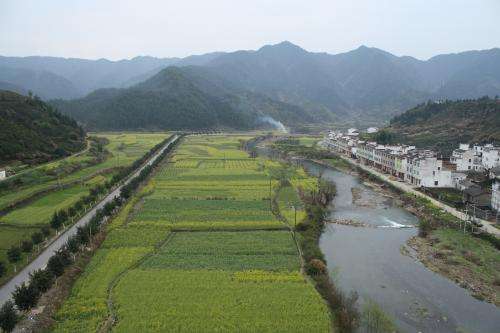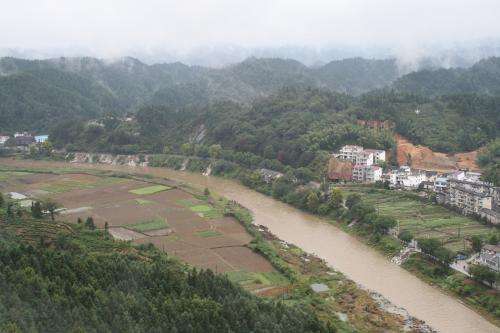Deforestation threatens species richness in streams

With a population of 1.3 billion, China is under immense pressure to convert suitable areas into arable land in order to ensure a continued food supply for its people. Accordingly, China is among the top countries in the world in terms of the extent and intensity of land use change. As shown in a new study by a team of scientists led by Dr. Britta Schmalz (Kiel University), in cooperation with Dr. Mathias Kuemmerlen, LOEWE Biodiversity and Climate Research Centre (BiK-F) and Dr. Sonja Jähnig, Leibniz-Institute for Freshwater Ecology and Inland Fisheries (IGB), deforestation may change the water surface runoff conditions, leading to a negative impact on the occurrence of microorganisms in rivers and streams.
Studies in a sub-basin of China's longest river
As part of this study, funded by the German Research Association (DFG), the team examined an area of about 1,700 square kilometers located in the Yangtzekiang River watershed, namely a tributary of the Poyang lake in Southern China. By using an ecohydrological model, it was possible to show how different land use types and intensity levels can influence the hydrological regime. The five scenarios that were studied encompassed three different deforestation and two afforestation scenarios. A medium deforestation rate, in which 53 percent of the forest is preserved (of the original 70 percent) and the remainder is used as agricultural land and for tea plantations, most closely approximates the ongoing expansion rate of agricultural areas in this Chinese region. This scenario was used to model the potential impact of these changes on the distribution of 72 species of invertebrates, known as stream macroinvertebrates.
Considerable range decreases for freshwater biota
Species rich stream reaches could become less frequent as a consequence of deforestation. Especially in areas where land use changes are expected to be most severe, is where insect larvae, snails, worms and leeches might become endangered. "As an example, we highlighted the distribution range of the stonefly Topoperla sp., based on a moderate rate of deforestation. As a result of the projected changes, its distribution range would decrease to a mere 15 percent of its current range," explains Mathias Kuemmerlen, BiK-F. Topoperla sp., as many other invertebrate microorganisms, is regarded as a water quality indicator. This leads to the conclusion that deforestation has a negative impact on the overall water quality.
Conversion to arable land changes the hydrological regime

In the present study, the cause for the decrease in species diversity is the changing hydrological regime resulting from the conversion of forest to arable land. According to the study, increasing deforestation causes, increased surface runoff, especially during the rainy season, which later flows on into streams and rivers. "In forested areas, surface water drains more slowly and in lower quantities; a significant percentage of the rain water is absorbed by the soil and by trees. Higher runoff rates may only be seen in floodplain forests, if at all. If forests are cut down and converted into fields, the surface runoff increases." says Kuemmerlen. If areas are afforested, the opposite trend occurs, allowing soils to store larger amounts of water again.
Land use change should be sustainable
The research team points out that the study's results offer a scientific basis for a sustainable landscape planning and management which takes into account the water cycle of the respective regions. The ultimate goal should be to use the limited resource "land" in a way that it ensures food security. . However, there must be room for the necessary adaptation measures in the face of global climate change. To certain degree this is supported by the preservation of forests in their role as runoff regulators and water reservoirs. Further modeling studies are being carried out elsewhere, also in Germany, in order to continue improving our knowledge on similar processes.
More information: Schmalz B., Kuemmerlen M., Kiesel J., Cai Q., Jähnig S.C. & Fohrer N. (2014) "Impacts of land use changes on hydrological components and macroinvertebrate distributions in the Poyang lake area." Ecohydrology, DOI: 10.1002/eco.1569




















